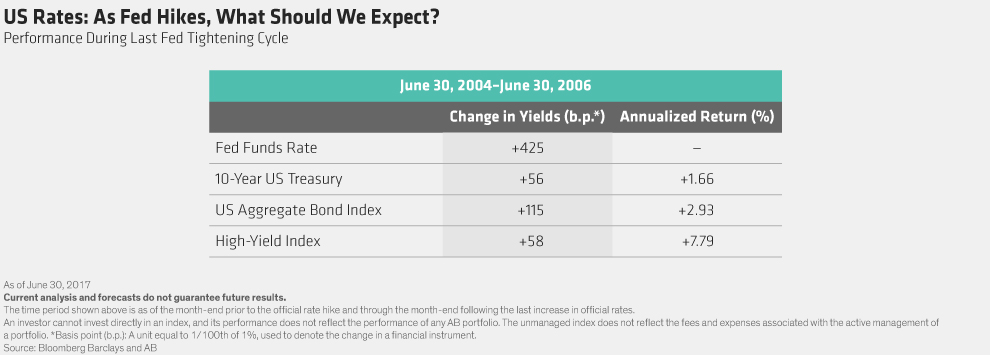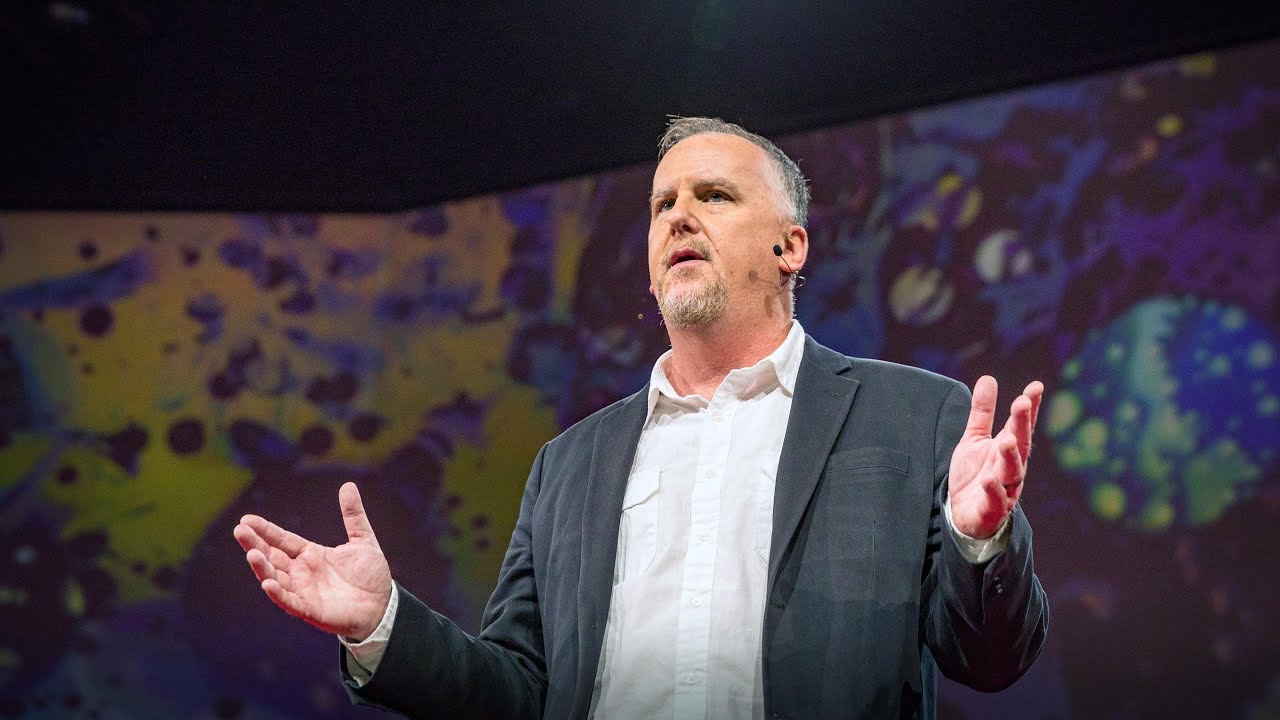Worried About Rising Rates? Here’s Why You Shouldn’t Be
by Gershon Distenfeld, Matthew Sheridan, High Yield, AllianceBernstein
Should tighter monetary policy on both sides of the Atlantic worry bond investors? We don’t think so. Bonds have historically delivered positive returns when interest rates rise—particularly when they rise gradually.
Of course, we appreciate investors’ concerns. After the global financial crisis, central banks provided unprecedented life support for markets and the global economy by cutting interest rates to record lows and buying trillions of dollars’ worth of bonds. Ending such massive monetary stimulus won’t be easy.
But that doesn’t mean it has to be painful or disruptive, either. We expect central banks to withdraw this extraordinary support very slowly.
Interest rates are rising in the US, but the Federal Reserve is moving at a snail’s pace—it has hiked rates just four times in 18 months. The Fed will probably reduce its balance sheet slowly, too—likely by letting some of its bonds mature each month without reinvesting the proceeds. Fed Chair Janet Yellen predicted that the reduction, far from roiling markets, would be about as exciting as “watching paint dry.”
The European Central Bank, meanwhile, is nowhere near ready to raise interest rates. But with eurozone growth improving, it has signaled that it may soon begin reducing the amount of bonds it buys each month. Again, though, we expect that policymakers will be in no hurry to end purchases altogether.
Why You Should Want Rates to Rise
To get a sense of what might be in store for the bond market, it helps to recall the Fed’s last tightening cycle, where 17 quarter-percentage-point rate hikes were spread over a two-year period. Both the 10-year US Treasury Index and the US high-yield bond market produced positive annualized returns (Display).

How was this possible? Aren’t bonds highly sensitive to interest-rate movements? Yes, but as long as they don’t default, bonds also produce a steady stream of income. And when rates rise, investors can reinvest the proceeds of their maturing bonds in newer—and higher-yielding—bonds. This often outweighs any short-term losses from rising rates and increases total return.
In other words, investors who rely on their bond portfolios to provide income over a long time period should be rooting for higher rates.
A rapid—and unexpected—rise in rates can be harder for investors to navigate. In 1994, inflation worries prompted the Fed to lift rates at a much faster clip over a shorter period of time—and without advance notice. The 10-year US Treasury Index lost nearly 4% during that cycle.
US high yield, however, was up 1.4%—evidence that active bond managers can still deliver positive returns even when Treasury prices fall, by using insights on valuation and credit quality to choose bonds that can withstand broader market downturns.
Today’s conditions more closely resemble those in 2004: the economy is gaining traction at a measured pace, inflation remains under control, and policymakers have tried to avoid surprises by clearly telegraphing their plans to financial markets. Under such conditions, bonds tend to do well.
How to Position Your Portfolio
So how should investors prepare? Those with high-income strategies can diversify their interest-rate and economic risk by taking a global, multi-sector approach. This could involve adding sectors such as US securitized assets, which benefit from strong credit fundamentals and consumer spending.
Such an approach might also involve a higher allocation to emerging markets, which stand to gain from stronger US and global growth. We see opportunities in some attractively valued local currency–denominated bonds from countries that are cleaning up their public finances and bringing inflation under control.
US high yield is in the later stages of the credit cycle. That means investors should be choosy about what they buy. But they shouldn’t avoid this market altogether. High-yield bonds are less sensitive to interest rates than other bonds are. And their steady income can enhance total portfolio returns even as rates rise.
Investors who want to maintain a lower risk profile might want to consider a barbell strategy that mixes interest-rate and credit risk and adjusts the balance as conditions and valuations change.
Even as rates rise, this approach would involve US Treasuries and other government bonds, which provide important diversification to credit exposure in all environments. Over the medium term, more than 90% of US Treasury returns come from the yield. That means that rising rates can dramatically boost income for investors who are not primarily focused on short-term price fluctuations.
Bonds are a critical source of income and a useful diversifier of riskier equities. Rising interest rates may cause some short-term volatility, but investors with a multi-year investment horizon are likely to benefit over time as rates rise.
The views expressed herein do not constitute research, investment advice or trade recommendations and do not necessarily represent the views of all AB portfolio-management teams.
Copyright © AllianceBernstein














